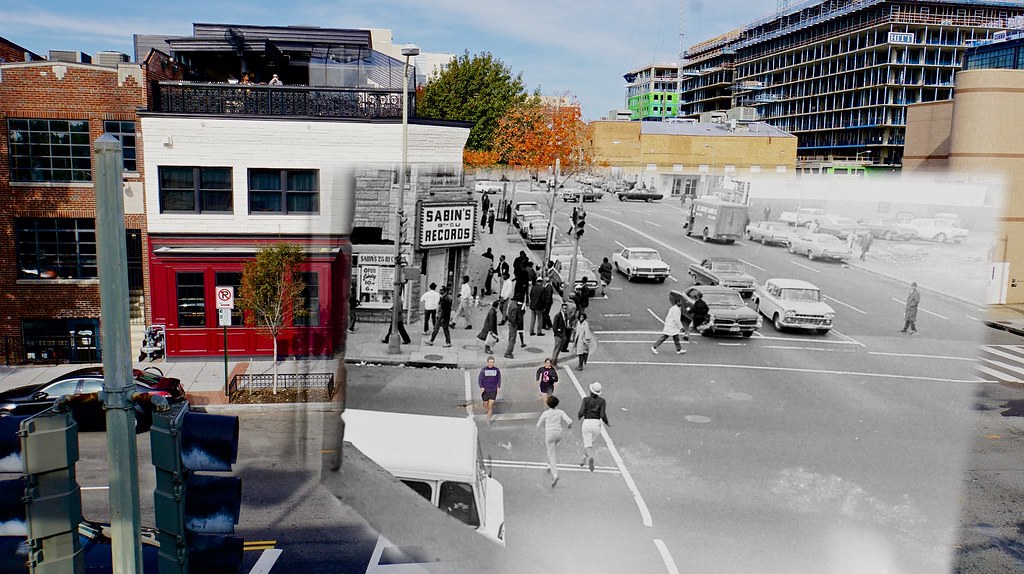I have been learning how to combine photos recently, and I am a fan of everything Washington, DC, history, and diversity, so….
Only one of the two photographs in the composite is mine. The other was taken on April 4, 1968, the day Martin Luther King, Jr. was assasinated. Unbeknownst to me (until recently), one of the most popular hangouts for the LGBTQ community in Washington used to be a photographic studio.
The 1968 photo comes from an amazing collection now housed at the Library of Congress. I decided to leave the 2014 joggers in the image to convey a healthy respect for the sacrifices that were made by those who came before us. It’s part of the reason I came to Washington, DC in the first place, to learn and observe.
Detailed description and links below.
A crowd mills in and around Sabin’s Records at 9th & U Streets NW, Washington, D.C. after the assassination of Dr. Martin Luther King Jr. on April 4, 1968. Note plywood being handled on the 9th Street side of the building.
This viewpoint is from the offices of Scurlock Studios at 900 U Street looking toward the northwest corner where U Street intersects 9th Street NW. At this intersection Florida Avenue runs to the East and U Street runs to the West while 9th Street runs north and south.
Part of the WUST radio station can be seen on the building one block north on 9th Street at V Street NW. The city exploded in anger at the news and experienced among the greatest property damage of the more than 110 cities that erupted April 4-7, 1968 and set a then U.S. record for mass arrests when more than 6,100 were detained.
Twelve died, mostly due to becoming entrapped in burning buildings and over 1,100 were injured. Property damage was extensive as corridors and 14th Street NW, 7th Street NW, U Street NW, H Street NE and Nichols Ave SE (later Martin Luther King Jr. Ave) were set afire. 1,200 buildings were burned.
For more information and related images, see flic.kr/s/aHsk4zGPDw Photograph by George Scurlock, Scurlock Studio. Courtesy of the Smithsonian Institution, National Museum of American History: Archives Center.

1 Comment
RT @tedeytan: Photo Friday: Washington, DC USA, April 4, 1968 and November 16, 2014 http://t.co/WyOqn7Bx9x http://t.co/l78Nv83fPB